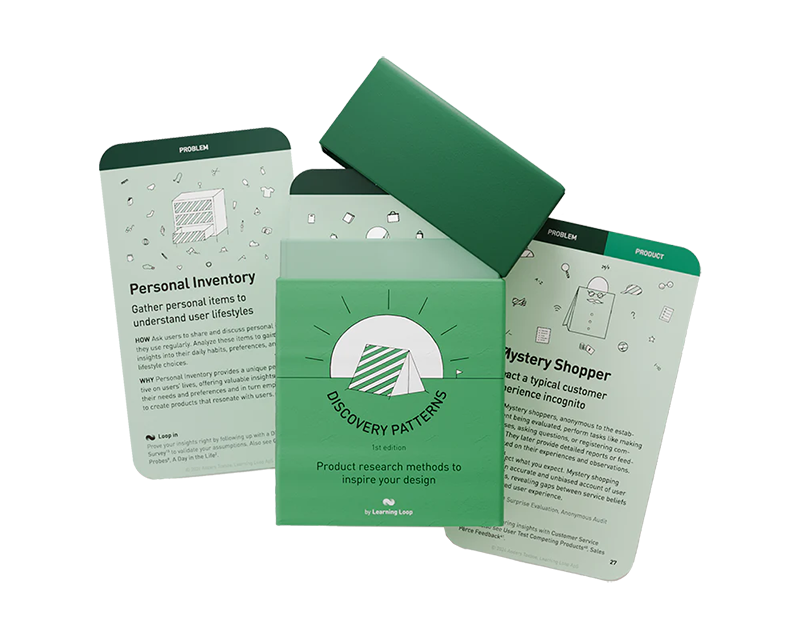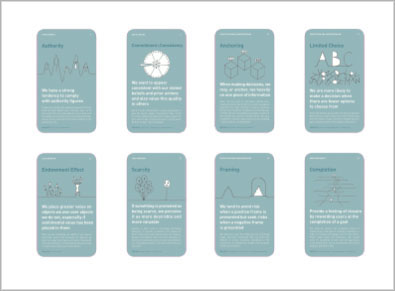
How: Ask users to share and discuss personal items they use regularly. Analyze these items to gain insights into their daily habits, preferences, and lifestyle choices.
Why: Personal Inventory provides a unique perspective on users' lives, offering valuable insights into their needs and preferences and in turn empathize to create products that resonate with users.
In product discovery, it’s easy to focus on what users say or do. But sometimes, what they keep—the objects in their homes, bags, or desks—tells us more than their words ever could. The Personal Inventory method invites us to learn from these personal artifacts, using them as windows into users’ priorities, habits, and deeply held values. Whether it’s a physical diary, a worn pair of shoes, or an app pinned to a phone’s home screen, these objects reveal subtle but powerful clues about how people live, decide, and adapt.
Unlike traditional interviews or surveys, which rely on users articulating their needs, this method focuses on what’s already present in their environment. What do they choose to keep close? What items are irreplaceable, invisible, or loaded with emotion? The Personal Inventory method helps us explore not just what people say they do—but how they’ve designed their lives in practice.
Why use a Personal Inventory for product research?
People don’t always explain themselves clearly in research sessions—not because they’re hiding anything, but because much of what matters is taken for granted. Personal inventories help uncover that tacit knowledge: what people value, rely on, or organize around, often without realizing it. By documenting and discussing the items they use, display, or carry, we gain insight into what they prioritize, how they define comfort or utility, and where our product might fit—or fail—in that landscape.
This method also creates space for emotional and symbolic expression. A tattered memento might tell a story of resilience; a specific notebook might reflect a user’s preference for analog tools in a digital world. These narratives are more than anecdotes—they can inspire positioning, feature prioritization, or experience design.
Personal Inventory is especially useful during early discovery phases. It helps researchers build empathy and context before diving into concepts or solutions. It’s also a way to ground innovation in real environments, anchoring ideas in the textures of everyday life.
It is particularly helpful for engaging participants with limited literacy or those in vulnerable populations. Because it is centered around objects and visuals rather than written or abstract verbal data, it lowers barriers to meaningful participation and insight.
Getting it right
The process begins with a prompt. Participants are asked to identify and reflect on items that matter to them in a specific context—work, health, travel, or family life. Sometimes they’re invited to photograph these items in place, or to gather them physically and share them in a session. Other times, they create visual inventories using tools like Pinterest, Milanote, Google Photos, or even physical scrapbooks.
Framing the prompt is critical. Instead of asking vague questions, use specific and targeted statements such as:
- “What are three items you use every morning without fail?”
- “What’s something you carry every day, and why?”
- “Which objects help you manage your health or stress?”
- “If you had to pack a bag for work, what goes in it and why?”
- “Which tools or devices make your routine possible?”
Researchers can conduct these inventories in-person (by visiting homes or workplaces) or remotely (using digital tools). Either way, the key is to approach the method with curiosity and respect. Ask participants: What does this item mean to you? How do you use it? When did it become important?
This method is especially powerful when participants drive the narrative. Instead of the researcher asking all the questions, participants explain the relevance of each item in their own words. It’s not about auditing or judging—it’s about uncovering the logic behind what someone keeps close.
In addition to 1:1 interviews, personal inventory activities can also be conducted in small groups. In a group-sharing context, participants present their selected items to one another, often sparking shared experiences, surprising differences, and peer-driven empathy. This format is useful in workshops or co-design settings where building mutual understanding is part of the research goal.
When to use Personal Inventories for product discovery
While other methods like Cultural Probes and A Day in the Life also offer insights into users’ lives, Personal Inventory differs in its focus on physical items. This tangible approach can often provide more direct and practical insights. For instance, the frequency of an item’s use can suggest its importance in the user’s life. Also, the type of items can hint at lifestyle choices and values, enabling you to create products that resonate with users’ needs and preferences.
The Personal Inventory method is well-suited for:
- Understanding behaviors and decisions that are emotionally or habitually driven.
- Exploring user context when entering a new market, culture, or segment.
- Designing products that must integrate with existing tools, routines, or physical environments.
- Capturing nuanced user values that aren’t easily articulated in traditional research.
- Working with individuals who may be excluded from traditional methods due to literacy, accessibility, or language constraints.
It’s especially helpful when working with populations who may have difficulty verbalizing their needs—such as those with limited literacy or those in vulnerable contexts. By focusing on objects rather than abstract concepts, the method invites more grounded, inclusive insights.
It’s also adaptable. Inventories can focus on physical spaces (e.g., a kitchen counter), digital ecosystems (e.g., most-used apps), or symbolic items (e.g., keepsakes that represent milestones). The format can scale from individual interviews to workshops with small groups.
What you’ll learn
Unlike surveys or usability tests, the outcome of a personal inventory isn’t metrics—it’s meaning. You might discover that:
- Users store backup devices because they don’t trust power grids.
- People rely on written planners alongside digital calendars.
- Certain apps are accessed not by opening them, but via voice commands or notifications.
These insights reveal not just what users have, but why and how they use it. They surface constraints, habits, and expectations that often go unnoticed in feature-driven conversations.
These inventories can inform journey maps, personas, or opportunity solution trees. They can also help identify misalignments between what your product assumes and what the user environment supports. For example, a health app that assumes daily internet access might not work for users who manage care routines offline using physical calendars.
Because the method invites access to personal and sometimes intimate spaces, researchers must lead with sensitivity. Make participation voluntary and flexible. Provide options for anonymity, and clarify what data will be collected and how it will be used. Consent isn’t just about signing a form—it’s about creating a space where participants feel safe and respected.
Also, be cautious about interpretation. A cluttered desk might signal disorganization—or it might represent creative flow. Let participants lead in explaining meaning. When in doubt, ask rather than infer.
Measuring and Interpreting Personal Inventory
When measuring the outcomes of Personal Inventory, consider aspects like lifestyle insights, relevance to lifestyle, and item frequency. Understanding the context in which items are used can reveal lifestyle patterns, while the frequency of use can highlight an item’s importance. Interpreting these measures requires a careful balance of objective analysis and empathetic understanding. Remember, the goal is not just to collect data, but to gain a deeper understanding of your users, which can inform a more accurate and user-centered product development process.
Pairing with with product experiments
Personal Inventory doesn’t stand alone—it’s most powerful when layered with:
- Contextual interviews to deepen understanding of the items users select.
- Diary studies to track use and relevance of items over time.
- Photo or video ethnography to document spaces and systems.
- Usability testing to validate how new features fit with existing tools.
- Journey mapping that integrates physical and digital touchpoints.
These combinations allow teams to connect object-level insights with broader workflows and decisions. It’s a method that roots your strategy in the texture of real life, not just in aspirations or prototypes.
The Personal Inventory method brings intimacy and grounding to research. It shifts the conversation from what users say they want to what they already use, protect, and rely on. In doing so, it helps us move beyond assumptions and into the lived reality of the people we’re designing for.
For teams doing product discovery, this method is a reminder that innovation doesn’t always begin with blue-sky thinking. Sometimes it starts by opening a drawer, flipping through a notebook, or asking: Why this? Why here? Why now?
Real life Personal Inventory examples
Fitbit
Fitbit uses personal inventory studies to understand customers’ fitness and health habits, aiding in the design of more effective wearable technology.
IKEA
IKEA conducts personal inventory research to understand home organization preferences, informing their furniture and storage solution designs.
A collection of clever product discovery methods that help you get to the bottom of customer needs and coining the right problem before building solutions. They are regularly used by product builders at companies like Google, Facebook, Dropbox, and Amazon.
Get your deck!Related plays
- Personal Inventory at Think Design
- The Personal Inventory Method at Censemaking
- IDEO Research Method #4 – Personal Inventory at Postscript Files
- Personal Inventory at Design Methods Finder

